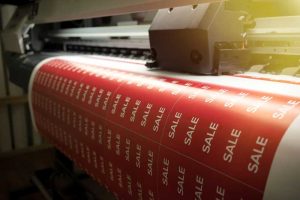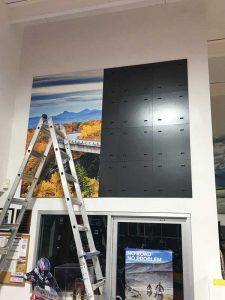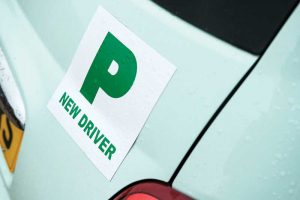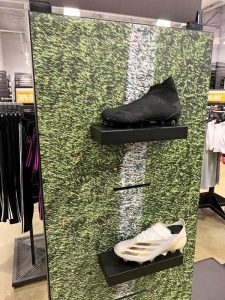The increasing pull towards magnetic signage
by carly_mchugh | 5 December 2023 4:31 pm
 [1]
[1]Printing on wide-format magnetic material is one of the new growing trends among signmakers. Images courtesy Simple Signman
By Carly McHugh
When we think of magnets, what usually come to mind are small, individual pieces designed to hold other materials in place. However, today’s magnetic solutions have evolved to become so much more. Now, sign professionals have an even wider variety of options at their disposal to create displays and other projects they would not have even dreamed of fabricating with traditional magnets.
For some first-hand insight on the growing attraction to these materials, Sign Media Canada spoke to Hugo Beauregard, sales manager and specialist at magnetic solutions provider Simple Signman. He discussed the latest advancements in magnetic signage and why sign shops should consider offering these options to their clients.
Sign Media Canada (SMC): What are some of the different types of magnetic materials commonly used in the sign industry?
Hugo Beauregard (HB): There are two different types. First, there are flexible magnetic materials, which include magnetic tape, magnetic strips, and magnetic sheeting. For example, car magnets are a common application. However, more sign companies are now printing on wide-format magnetic material to make signage or even cover up walls. This is definitely the trend at the moment.

SMC: How do magnetic signs compare to traditional adhesive vinyl signs in terms of durability and reusability?
HB: With adhesive vinyl, you apply it and it’s permanent. With a magnet, it comes off easier and doesn’t need to be on for as long. An application that has been done for indoor and outdoor signage is magnetic receptive material. You can easily put this on because you only need to roll it over the magnetic surface. When you apply vinyl, it takes a good amount of expertise to be able to do it properly. With magnetic receptive material, you can also easily interchange the graphics. Therefore, it’s more seasonal than a long-term application, and it’s fairly easy to apply once the magnetic base is in place. You don’t need a technician to go on-site and apply it.
SMC: You mentioned wide-format printing as an area where magnetic material has become more popular. In terms of ink transfer, do you find it holds better than it would on vinyl? Does the type of finish affect how the ink transfers to the material?
HB: Most of the traditional polyvinyl chloride (PVC) magnets or PVC vinyl on the magnets can be printed on using ultraviolet (UV), latex, solvent, or screenprinting. However, there are also wider materials up to 1,524-mm (60-in.) wide that are PVC-free. They print easier, they cut better, and their white point is better. There’s also no adhesive and no gumming. The material has really improved over the past two or three years to become more accessible—not only wider, but also easier to print on. It’s definitely more innovative and eco-friendly. There are only advantages to using these magnetic solutions.
 [2]
[2]With wide-format magnetic solutions, signmakers can move beyond common applications such as car magnets.
SMC: How do environmental factors such as temperature and moisture affect the performance of magnetic signs?
HB: On cars, they have a tendency to lose their magnetic properties in the winter and in cold temperatures. It’s good to use magnetic car signs up to -20 or -26 C (-4 or -14 F). After that, the customer might lose them. The opposite can also be true. I’ve seen some applications in the south of the U.S., where it’s super warm. If the sign isn’t well maintained—especially on an outdoor application—and the customer doesn’t do a weekly cleaning of the sign and the surface where the magnetic sign goes, it could create problems.
It’s not true that you can apply it, let it be for as long as you want, and then take it off, because there are many different aspects to take into consideration. For example, for a brand-new car, you need to wait several months before applying a magnet, because the chemicals, the paint, and the fumes are still evaporating. You don’t want to slap a piece of magnet on top of that. The humidity in some areas could also be problematic, so you need to be careful with this application. Otherwise, you’ll get a ghost effect, and we don’t want that to happen.
SMC: Are there other safety considerations sign professionals should keep in mind when working with magnetic material?
HB: It’s heavy. A magnetic roll at 1,219.2-mm (48-in.) wide—the 30 mil we use for cars—weighs about 130 lb. Therefore, you have to be careful. One person can’t lift the roll and put it on the equipment, the press, or the cutting machine. Otherwise, there are no chemicals involved, so that’s not an issue. It’s only the weight of the material on the wider and heavier gauges.
SMC: How can magnetic signs be effectively customized to meet specific branding and promotional needs?
HB: At the moment, many applications are indoor, not outdoor. Traditional car magnets have been covered for so many years, but it’s the inside application that is becoming more common. For example, Starbucks is using these solutions. McDonald’s followed the trend. Companies such as Adidas and Under Armour use the wide-format solutions in their in-store presentations. They’re easy to cut with a computer numerical control (CNC) table to do special shapes. They’re versatile, and if a sign shop is really creative, they could use several components to build something totally different, and the customer would appreciate it because it’s up to the next level.
Ultimately, there are many displays that could be built with magnetic solutions. You would just have to use your imagination to develop the right ones. Based on the size of the sheets, they can be customized for specific shapes and sizes and different applications, depending on what the project calls for. The magnetic material could be cut with a guillotine or an X-Acto knife when there’s no shape, but if you have a CNC table, you could make very creative graphics.
 [3]
[3]Companies such as Adidas use wide-format solutions in their in-store presentations.
SMC: What innovative uses of magnets have emerged in the sign industry in recent years, and how have they impacted design and installation?
HB: Customers are looking for different trends. Many applications have been done with a steel sheet as a background, printed with a four-colour process on wide-format. It can be installed as a display, and then you can use stronger magnets in combination with the wide-format magnetic sheeting to create something you can modify to your needs. Some hardware stores are using panels with magnetic tape in the back, which is good, but now you can really get creative with those. In corner stores, you can create super nice visual displays with a wide-format solution and add some stronger magnets on top to create shelves and other applications customers need. This is an application that is trending upward and needs to be seen by signmakers.
SMC: Some of today’s advancements have allowed magnets to stick to non-magnetic surfaces such as glass. Does this material have the ability to stick to these types of surfaces, or do they have to be magnetic?
HB: The base needs to be a ferrous surface. Sometimes we think stainless steel doesn’t have any magnetic properties, when in reality, it depends on the grade of the steel. There are other components available for wide-format—especially for car signs—which are not magnetic, but they could be used as magnets. Micro-suction material has the same effect as a magnet, but it can be used on glass, or a stainless steel or aluminum car. Those solutions are starting to become more available and trusted by signmakers.
SMC: Do you have anything else you would like to add about the use of magnetic solutions in the sign industry?
HB: What I’ve learned over the past month, especially from being at trade shows, is signmakers may have put magnets aside in the past—because in their mind, they were solely for applications such as car magnets. However, for the new generation of signmakers, when they look at their equipment, they’re looking for more out-of-the-box applications. Magnetic materials have many components that could be used to satisfy these needs. They could be used to develop many repeat orders, if signmakers took the time to look at what is available. With our displays and presentations, we encourage customers to think a bit further than just car magnets. There are many different applications, and if they really want to look deeper, they can ask magnet companies to help them develop those products.
- [Image]: https://www.signmedia.ca/wp-content/uploads/2023/12/MicrosoftTeams-image-124.jpg
- [Image]: https://www.signmedia.ca/wp-content/uploads/2023/12/AdobeStock_3001317592.jpg
- [Image]: https://www.signmedia.ca/wp-content/uploads/2023/12/Adidas641592.jpg
Source URL: https://www.signmedia.ca/the-increasing-pull-towards-magnetic-signage/